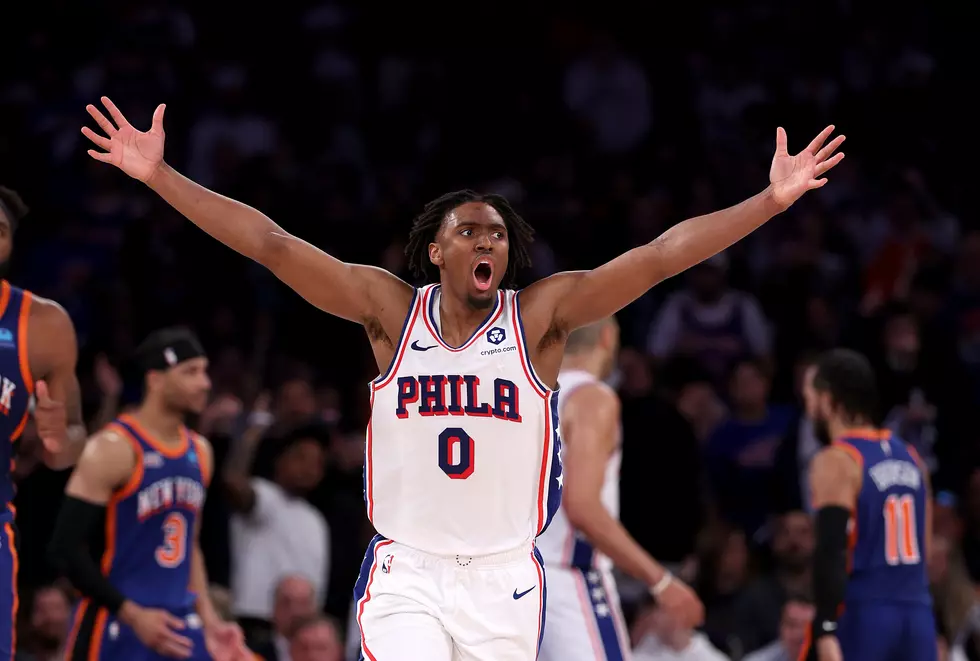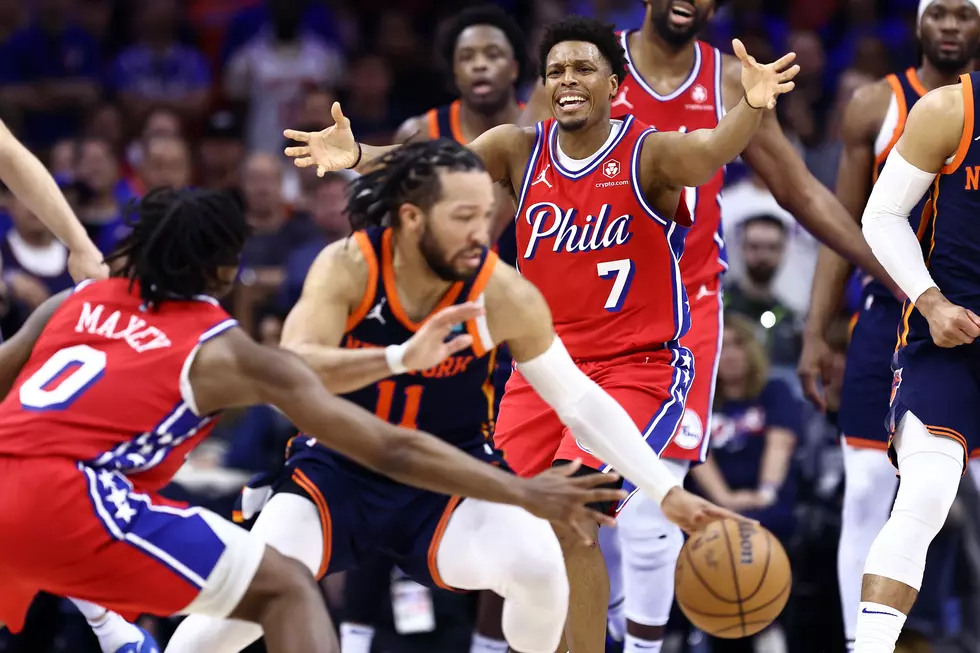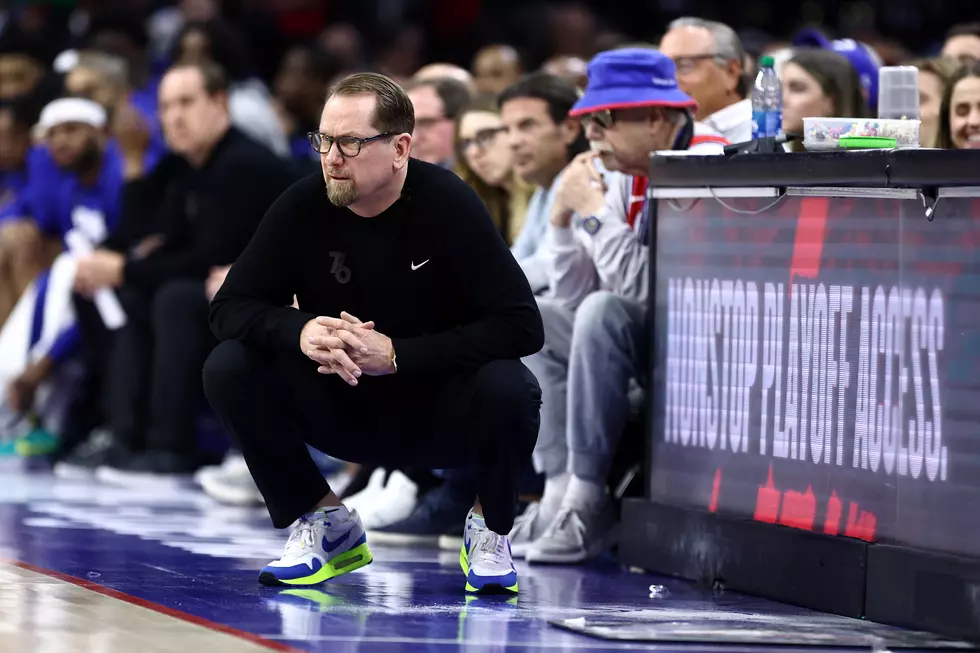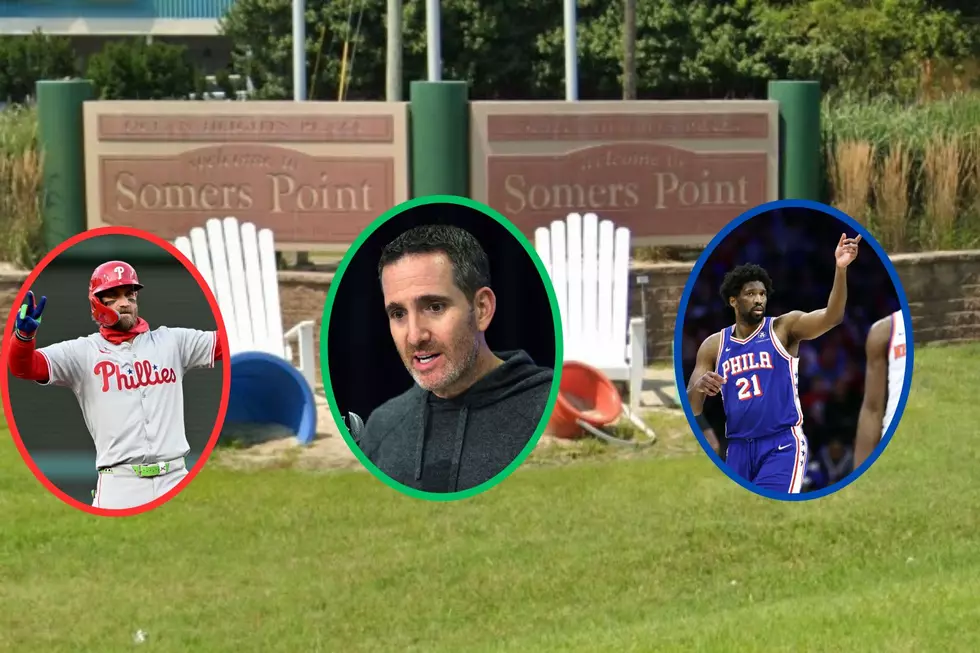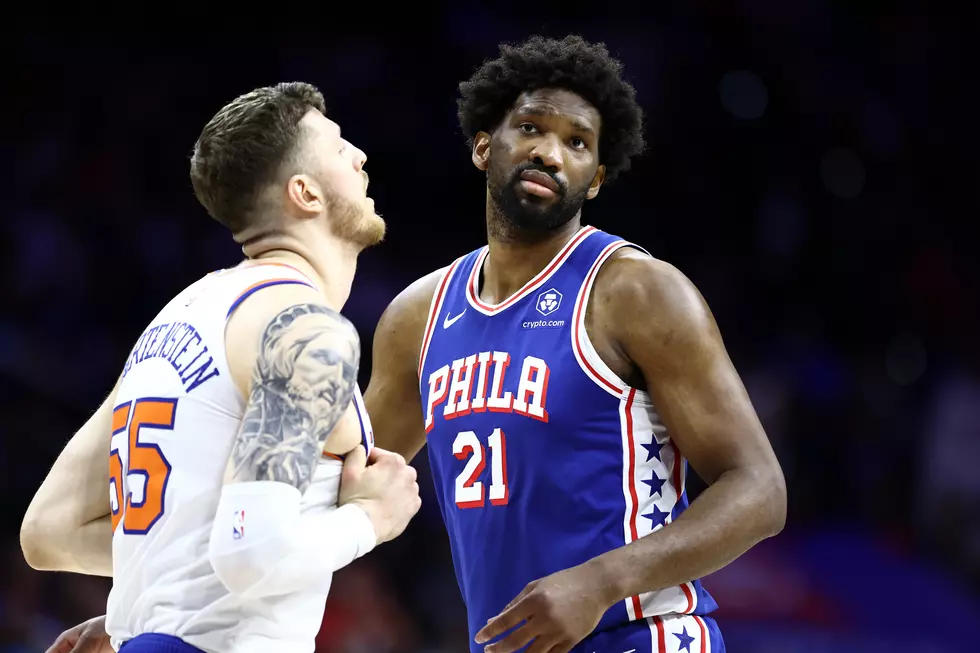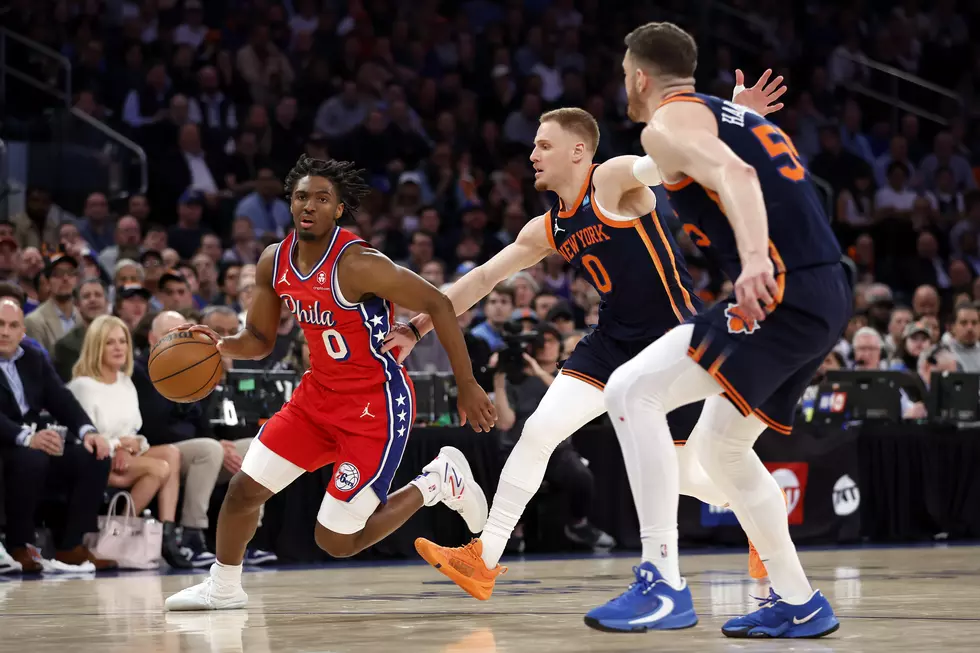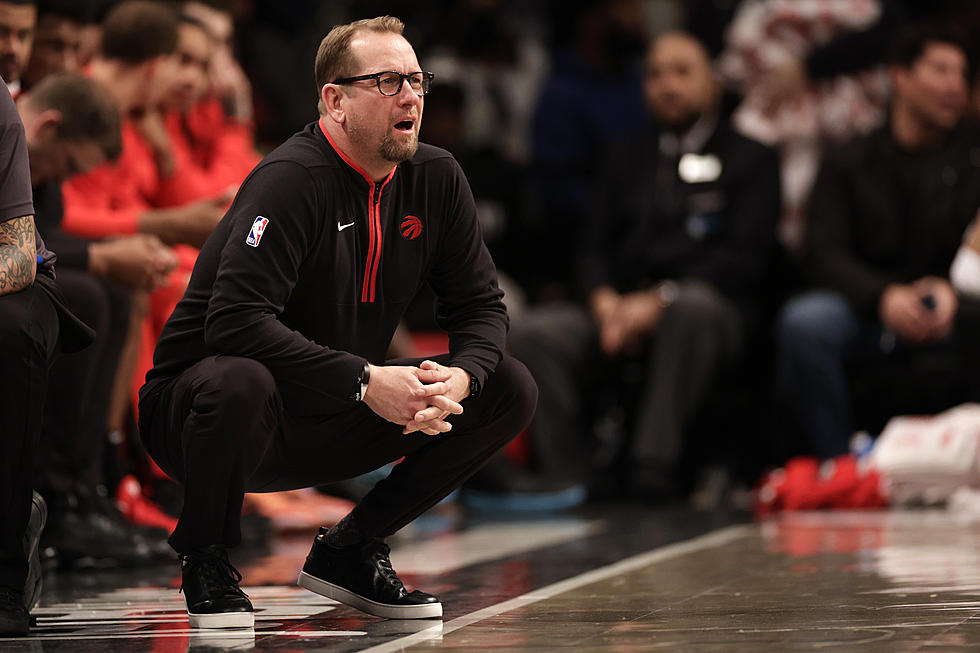
How much of the Raptors’ offense will Nick Nurse bring to Philadelphia?
As things sit in the middle of June, the Sixers find themselves on the doorstep of apathy in the hearts of their fans.
That's a difficult state to achieve when you have one of the three best players in the world on your roster.
The Sixers will have to wait until next spring to have a chance at rebuilding the fan equity they've burned to faint debris. But, even with James Harden's future with the franchise uncertain and Joel Embiid's stock down in the wake of his series against the Celtics, there is something new in place that, at the very least, proves that Philadelphia isn't exploring the definition of insanity.
That something is newly minted head coach Nick Nurse.
Philadelphia's early exit from the 2023 playoffs, in its simplest form, can be boiled down to the offense cratering in the most important five minutes and change of the season.
There the Sixers were, less than six minutes of clean offense away from upsetting the Celtics in six games and earning a berth in the Eastern Conference finals. But, as fatigue set in and the stakes rose, the Sixers came to find out that their meal ticket all season -- the two-man game between Embiid and Harden -- wasn't going to be enough against a championship-contending defense fighting to stave off elimination.
They were able to get away with three guys watching Embiid and Harden go to work to the tune of the third best offense in the NBA in 2022-23. But, that's because night-to-night defensive effort is inconsistent and they got to face the worst defenses in the league at least two times each in the regular season.
According to Cleaning The Glass, Philadelphia's overall offensive output was slightly inflated by a robust transition number -- best in the league, in fact. The halfcourt product ranked fourth, per Cleaning The Glass. Still excellent, but also still means that the transition attack lifted the Sixers' overall offense a bit.
So, when Game 6 slowed down in the final five minutes and the Sixers were chained to halfcourt offense, Boston -- an already bad matchup -- exposed Philadelphia's offense as being too simple.
Maybe you can get away with running pick-and-rolls with the same two guys over and over again. Maybe you can get away with three of the guys on the court barely touching the ball. What you can't get away with is three guys standing around and watching as the other two guys slowly plot the possession to its end:
The whole reason this possession devolves into a Tyrese Maxey step-back three over Jaylen Brown is that the Sixers are up against the shot clock. They're up against the shot clock because there aren't any weaknesses to attack straight-up in Boston's lineup. That means buoying your entire halfcourt offense to the two-man game isn't a plan or system; rather, it is a lack of plan and system.
Having a menu that doesn't go much beyond the first course makes you predictable, and predictable is often the enemy of victory in this game.
That's why the Sixers choked away Game 6, their best chance to upset the Celtics and get to the Conference finals for the first time since 2001. It left them vulnerable to an anything-could-happen Game 7. You know the rest.
In comes Nick Nurse, the guy who re-wired a midrange-heavy offense to get with the times as an assistant on Dwane Casey's staff with the Toronto Raptors, promptly won a championship in 2019 manning the ship when Casey was relieved of his duties in the summer of 2018, and guided the Raptors to an overachieving 2019-2020 season after Kawhi Leonard left in free agency.
As much as Nurse has been lauded by peers and media, alike, his offenses have trended more towards mediocre than good:
"We want to score efficiently. Can we create more possessions than our opponent? Can we take efficient shots, have low turnovers, get on the offensive glass? All those things that make an efficient offense, and it looks different for every team," Nurse told reporters at his introductory press conference in Camden, New Jersey in early June.
"And sometimes it looks different for the same team from season to season. So, I think that's all kind of T-B-D."
Those are fairly rudimentary concepts in their own rights. Nurse isn't exactly a mad scientist for concluding that winning the possession battle, taking the best types of shots, and creating addition plays per possession for yourself is a formula for a healthy offense.
And yet, the Sixers haven't ever really mastered that checklist during this era:
But, it is the proposition of taking efficient shots that is most fascinating.
The Sixers will inherently trend towards more inefficient shots because their best player is a midrange sniper. But, Embiid's midrange jumper is so effective that you could probably argue that him shooting a 15-footer is at least as efficient a use of a possession as is most players taking threes.
Therefore, the concept of "efficient shots" can't just be about threes and scores at the rim. It has to also be about both creating open shots all over the floor and the shots that best suit the skillsets of your players.
And that's where Nurse's particular brand of tactics shine brightest.
Nurse borders on ruthless in his strategy on offense. If there's a weakness to test, his team will poke at it to see if it's resistant.
His Raptors' series against the Sixers in 2019 is a great example of that.
During that series, Embiid suffered from gastroenteritis and a knee injury that plagued him for most of the post all-star break regular season.
So, when it was revealed that Embiid was questionable for Game 2 of the series, Nurse wasted no time:
- Early in the game, the Sixers tried to hide Embiid on Pascal Siakam, who, at the time, was emerging as a core piece but not quite yet a fulcrum of the offense. So, Kyle Lowry called Siakam up to screen so that he could set him up for a 14-foot floater as a counter to Embiid's drop coverage.
- Next possession, Embiid picked up Siakam in space. The Raptors threw the ball right to the wing, testing the isolation play to make Embiid move his feet.
- Then, since they knew Embiid wanted to be in drop coverage, the Raptors went with a pick-and-pop for Marc Gasol, yielding an open look at a three.
When engaged on that side of the ball, Embiid has an immense defensive impact just by being on the floor; he doesn't even have to block shots. But, the Raptors knew he was vulnerable, so they tested the weakness. If nothing else, it aided them in getting out to a decent start while Embiid needed some time to get going.
If there's a mismatch to exploit, his team will use it to their benefit. The goal isn't necessarily to score directly from that mismatch. Rather, it might be that the first or second pass away yields a better shot because the defense is rotating to help re-enforce the vulnerable spot.
Gasol was barely interested in scoring during that 2019 series. But, that didn't stop the Raptors from tossing the rock his way when he had a size advantage. The logic was to bet on a help rotation to aid the disadvantaged Sixer, freeing a Raptor elsewhere on the floor:
But, that 2019 playoff run also illustrated that Nurse knew the importance of striking a balance between analytically efficient shots and the shots that were most appropriate for his best player.
Toronto's volume of shots at the rim in the playoffs was five percent lower than it was in the regular season. Conversely, the Raptors attempted 2.3 more threes per 100 shot attempts in the playoffs than they did in the regular season.
Even with a balanced team diet of threes and rim attempts shifting to a three-point-heavy attack come playoff time, the Raptors empowered their superstar to take the shots that made him so deadly:
There was a slight decline in shots at the rim, which we can attribute to defenses taking away angles for Leonard to get inside. We can also attribute the slight uptick in three-point volume to defenses playing off ever so slightly to reduce Leonard's ability to beat them off the dribble for his bread-and-butter pull-up midrange jumpers.
But, the overwhelming majority of Leonard's scoring came in that patented midrange area; the antithesis of the types of shots that the rest of the team strove for.
As the talent of that championship core dissipated and the pieces in place struggled to manufacture sustainable offense in the halfcourt, we saw more of Nurse's bag of tricks.
There are some things as simple as a Floppy action, which you can easily envision him incorporating into Philadelphia's mix for Maxey:
If the Raptors didn't score directly from the action, they wanted to get the defense into rotation so that an open look would develop elsewhere. A simple Spain pick-and-roll created this open corner three for Chris Boucher in Game 3 of the 2022 first-round series between Toronto and Philadelphia:
Both Nurse and Rivers have good minds for subtleties within plays. I particularly enjoyed this curveball late in Game 3 of that 2022 series:
In fairness, it's anyone's best guess as to whether Nurse directly called this play or the Raptors on the court knew to run it after years of playing together. But, it's an excellent decoy.
They know Embiid will be in drop coverage. But, that's hardly the point. The Raptors disengage him from the coverage by lifting OG Anunoby up through the slot and bringing Tobias Harris into the play. Embiid, now flat-footed and not in a defensive stance to rush over to Fred VanVleet because Anunoby is now in the picture, motions for Harris to get out to the ball. But, Anunoby blocks Harris off just enough for VanVleet to burst to the edge of the three-point arc for an open look.
To be clear, this is just a middle pick-and-roll. Nothing fancy. But, the subtle introduction of a third offensive player deactivates the only defender who could've made a real play on VanVleet's shot.
Nurse really differentiates himself on offense in two categories: using the second side of the floor and cutting.
Left-right and vice versa ball movement withstood the test of time in those Raptors offenses. Whether it was the championship team or the final iteration of the Nurse era, Toronto didn't confine its offense to one side of the floor.
Dribble weaves at the top of the floor were a fixture in the halfcourt. The Raptors also loved off-ball pin-out screens around the elbows for the man in the corner to cut towards the middle of the floor for a catch on the move as he made his way to the basket:
That North-South ball movement incentivizes cutting because defenders will inevitably make mistakes if they have to stay engaged for prolonged stretches. All it takes is one overplay to set up a back-cut, and one helper rotating to set up an open three in the weak-side corner.
In terms of frequency, Toronto vacillated between being an above-average cutting team and being a bad cutting team during Nurse's time. But, broadly speaking, they trended towards the top half of the league when they added Gasol and after they drafted Scottie Barnes.
The common denominator? Playmakers in the middle of the floor.
As far as the spectacular now is concerned, there's one question to ask: Which halfcourt offenses had most of Nurse's DNA, the one that ranked eighth or the ones that trended mediocre or worse after Leonard departed?
Well, that's up to you to decide.
36 Restaurants to visit in Sea Isle City, NJ (Alphabetical Order)
More From 97.3 ESPN
